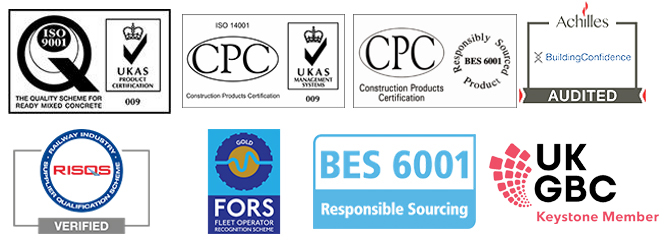Heidelberg Materials EasyWay®
Hardwearing and highly durable
Heidelberg Materials EasyWay® uses a specialist blend of ingredients to create a hardwearing, highly durable and quality-assured product. This strong and easy to place concrete solution is designed specifically for domestic use and requires minimal maintenance after it’s been laid.
Where to use it
- External paths
- Driveways
- Pavements
- Patios
- Steps
The benefits
- Formulated for ease of placement
- Highly durable, resistant to frost and chemicals
- Contains fibre reinforcement, increasing toughness and resistance to cracking
- Impact and abrasion resistant
- Hardwearing and low maintenance
- Quality-assured
- Complies with British and European Standards
Laying EasyWay®
Tools you may need
- Shovel
- Lump hammer
- Wooden/steel float
- Rake
- Wheelbarrow
- Watering can or hose pipe
- Brush
- Claw hammer
- String and pegs
- Spirit level
- Measuring tape
- Chalk line/line marking paint
Excavating your site
- Mark out the area with string lines attached to pegs driven into the ground outside the work area.
- Once the ground is marked with a chalk line or line marking paint, remove the string and pegs to excavate the site, but replace them later to help position the formwork (explained below).
- Remove the top soil and vegetation down to a level which allows for the combined thickness of concrete and sub-base. Make the area of excavation about 150mm (6″) bigger than the size of the area to be concreted.
- Level the bottom of the excavation by dragging a board across it. Make sure the soil is firmly compacted and cut back any tree roots which intrude into the work area.
Making your formwork
Formwork is the term given to the temporary mould into which concrete is poured. For a straightforward rectangular area, use 25mm (1″) of thick softwood planks that are as wide as the finished thickness of the concrete.
- Place them on their edge and hold them in place with thick wooden pegs nailed to the batten on the outside. The pegs need to be suitably spaced to provide solid support – wet concrete can exert high sideways pressure. If it’s slightly thinner than 25mm, use more pegs.
- The top edge of the planks must be level and correspond exactly to the surface of the area being concreted. Check the rectangle for accuracy by measuring the diagonals. These should measure the same amount.
Curved formwork
If you want to create a curved area, you’ll need to bend your wooden formwork. Make a series of parallel saw cuts across the width of the plank in the area of the curve. For gentle bends make cuts on the outside, and for tight bends make them on the inside of the plank.
Laying your sub-base
Sub-base is the term used to describe the compacted material underneath the concrete. It can be crushed aggregate, which can range from usually 40mm, to less than 5mm. If you’re using secondary or recycled aggregates, (eg crushed concrete or bricks) it should be free of contamination. We can supply a range of sub-base products if you need us to.
Place the material within the formwork and rake it so that it’s fairly level before compacting it.
Break up any large lumps and fill in low spots with fine material or sharp sand, until the sub-base comes up to the underside of the formwork.
Use a rigid board supported on either side by the formwork to check the level of the sub-base all the way across.
Placing the concrete
- Dampen the sub-base and formwork with a fine spray and let surface water evaporate before tipping the concrete in place.
- Start filling from one end of the area. If it’s on a slope, start at the bottom. Ensure the concrete is pushed firmly into the corners.
- Rake it level until the concrete stands about 18mm (3/4″) above the level of the formwork.
- Firmly pack down the concrete with the edge of a plank long enough to span across the formwork. Start at one end of the area and compact the concrete with steady blows of the plank, moving it along slowly as you do. This may need two people.
- Remove excess concrete using the plank in a sawing motion. Fill in any low spots, then compact and level once more.
Leaving your concrete to set
As soon as the concrete is sufficiently hard not to mark, cover the area with sheets of polythene to retain the moisture, weighing it down with bricks around the edge. This will prevent the concrete drying out too quickly and cracking or dusting. Leave the polythene in place for at least three days.
Accreditations
Heidelberg Materials is a member of the Quality Scheme for Ready-mixed Concrete (QSRMC) and all our products carry this certification.


